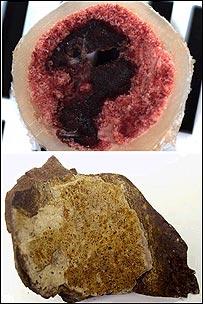Palaeontologists believe they have found a way to tell whether a dinosaur fossil was male or female

In an article in the journal Science, a team of experts from the USA describes a method for examining the bone layer of Tyrannosaurus Rex fossils, similar to the one found today in female birds.
In birds, bone tissue especially rich in calcium is found in the limbs of female birds during the laying season. Similar tissue found in dinosaur fossils is closer to that of birds such as emo and ostrich.
The scientist who made the discovery says that this strengthens the evolutionary link between dinosaurs and birds because it shows that their bodies went through similar processes during egg laying.
"In addition to illustrating the animal's mate, this is also related to the fact that the reproductive physiology of dinosaurs and birds was similar, said Dr. Marie Schweitzer from the University of North Carolina, co-author of the article.
Some researchers hypothesized that female dinosaurs differed from males in the shape of the skeleton or in the angle of the head, but these theories were difficult to prove.
The female birds use the bone marrow to lay eggs. Concentration in the bone marrow is controlled by increasing the levels of gonadal hormones produced during ovulation. These tissues are rich in calcium and contain many small blood vessels, which provide a ready source of calcium for the eggs.
All sex marks in dinosaurs disappeared as they were composed of soft tissues during the fossilization process. However, Dr. Schweitzer, Jack Horner and Jennifer Wittmeyer (Wittmeyer), identified bone tissue in the limb of Tyrannosaurus rex that resembled the bone marrow layer of female birds. The bones are particularly similar to those found in females of a group known as ratites, which includes the ostriches and the emu.
"If indeed the bone marrow in T. Rex is similar to that of birds, we should expect that dinosaurs between T. Rex and birds will allow us to build a family tree," said Darren Naish, a paleontologist from the University of Portsmouth in the United Kingdom. "Then we can investigate whether it also existed in other groups of dinosaurs.
Dr. Naish speculates that the discovery can be used as a tool for conducting experiments to determine the species of individual dinosaurs from the many that have been discovered so far.
